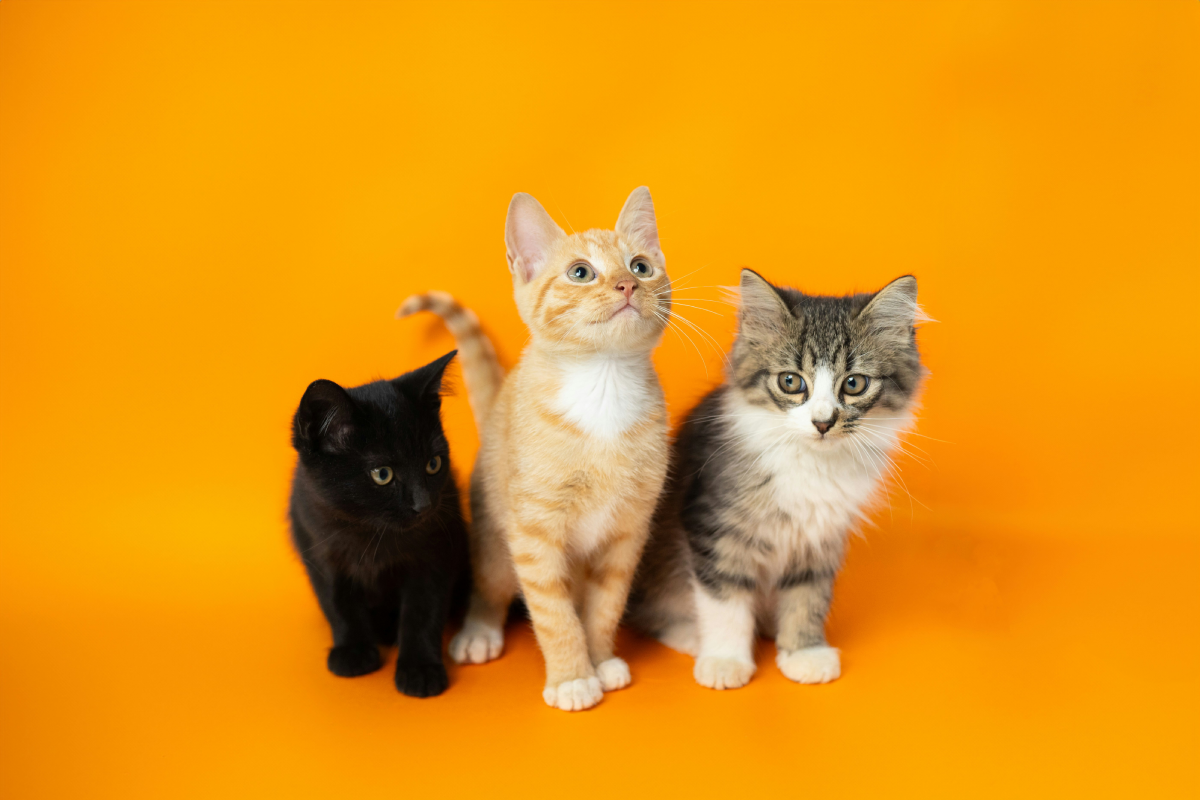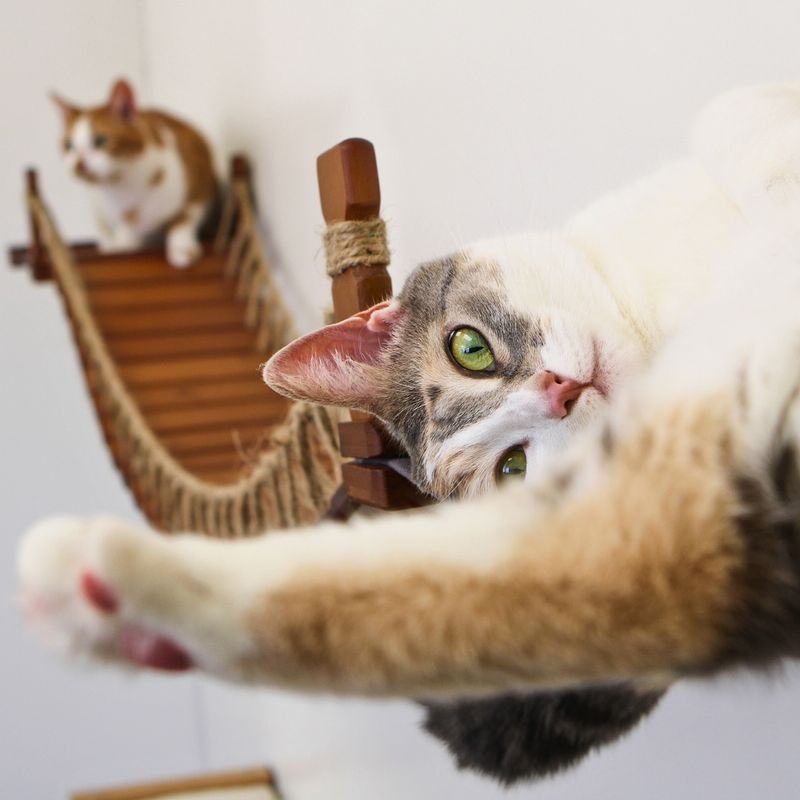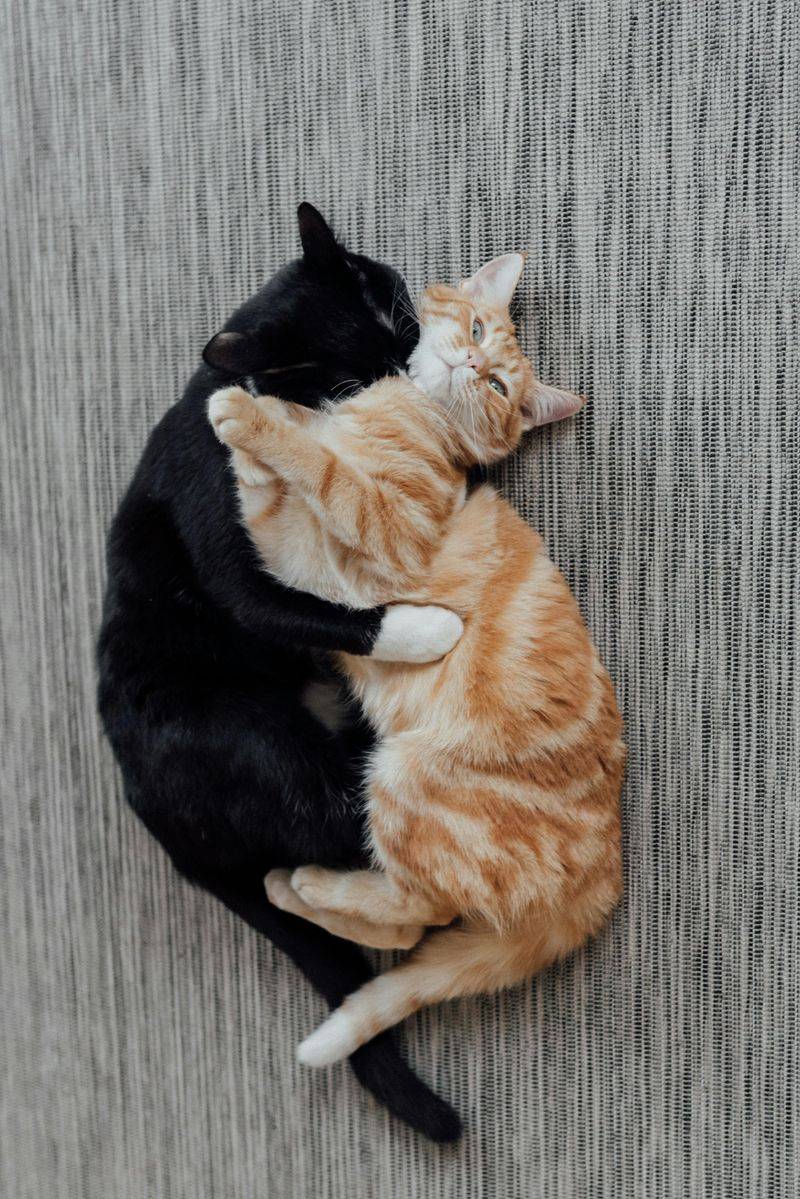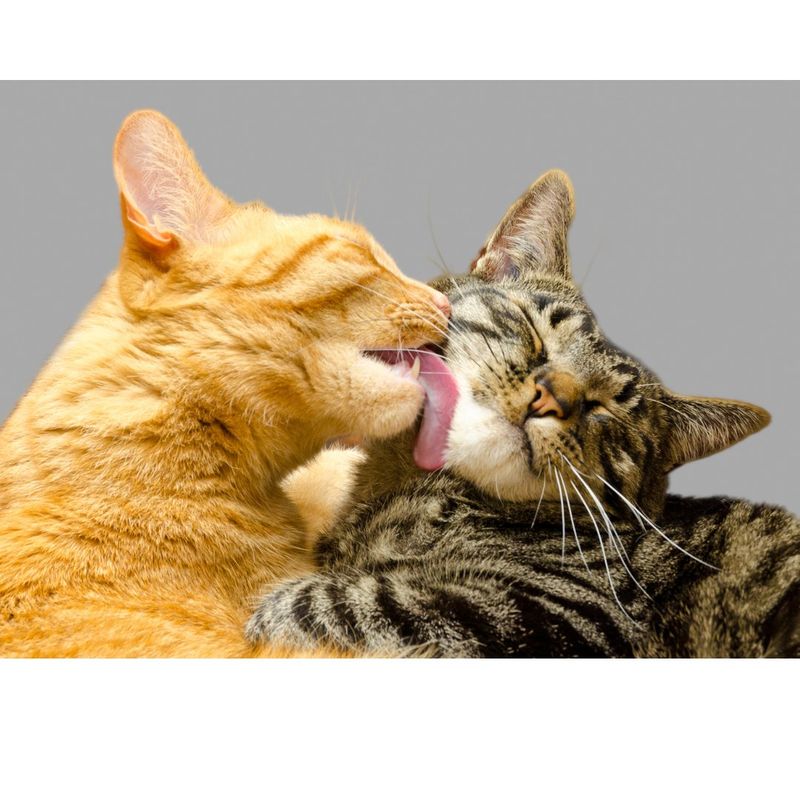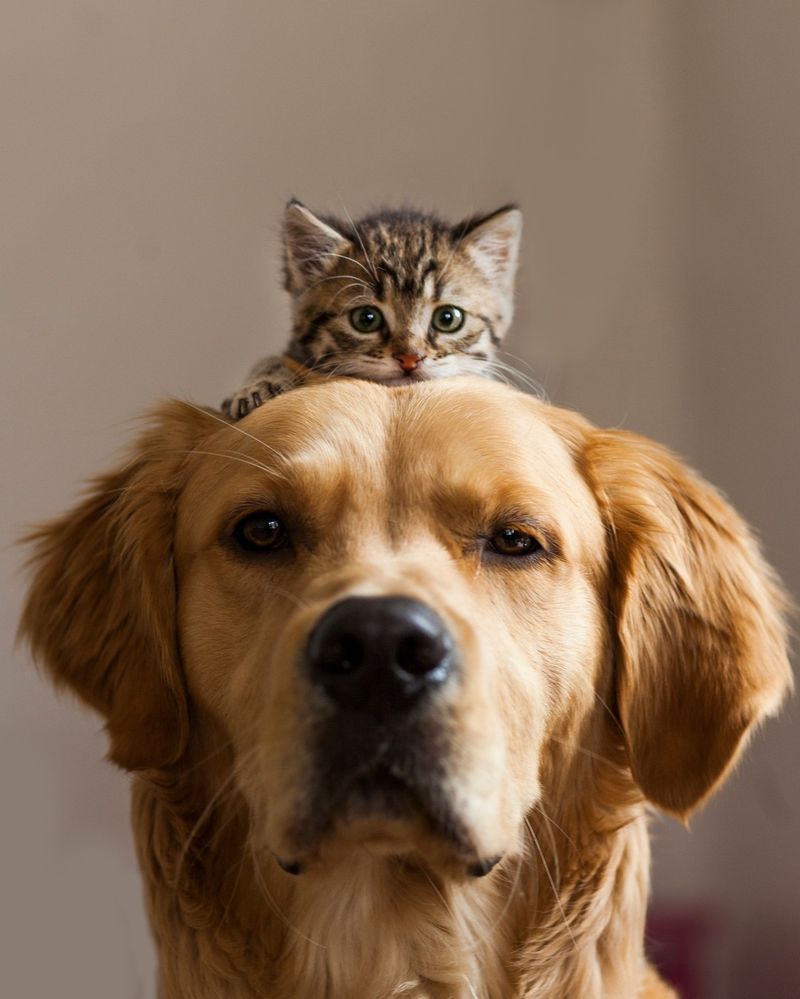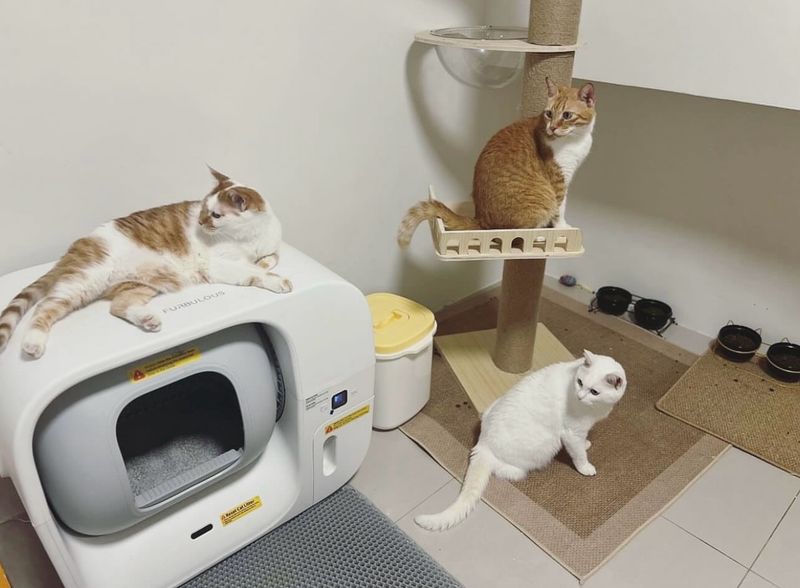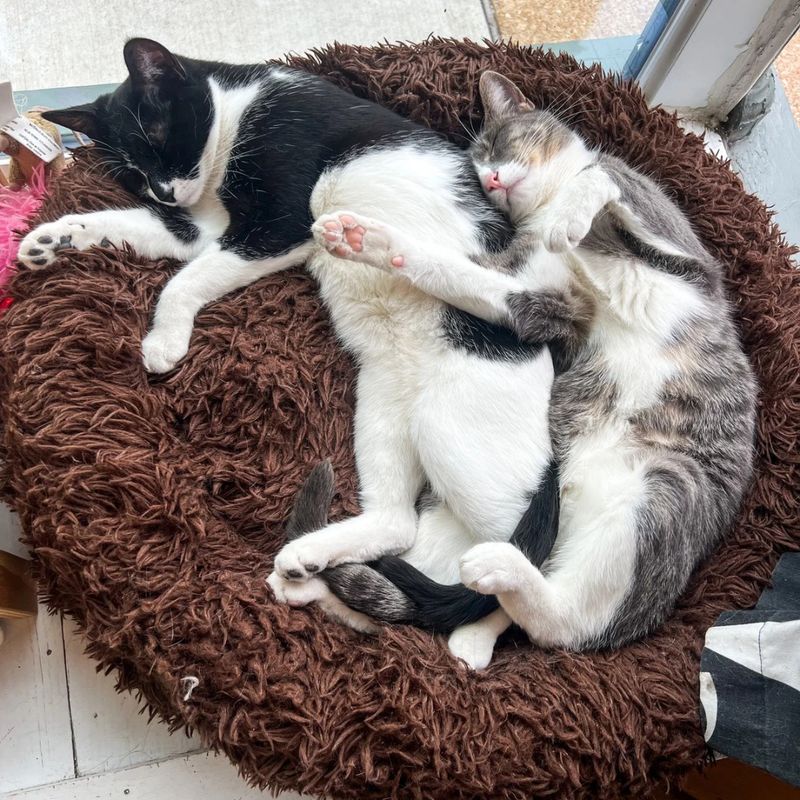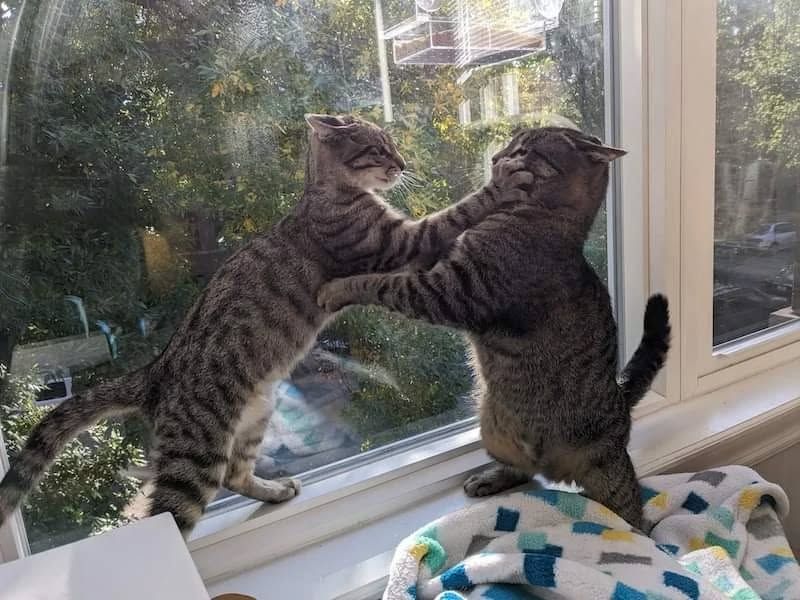📖 Table of Content:
- 1. Pro: Built-in Playmates Keep Each Other Company
- 2. Pro: Less Guilt When You’re Away From Home
- 3. Pro: Double the Affection and Unique Personalities
- 4. Pro: More Efficient Pest Control Team
- 5. Pro: Shared Grooming Helps Keep Them Clean
- 6. Pro: Easier Transitions When Adding New Pets
- 7. Con: The Litter Box Situation Gets Complicated
- 8. Con: The Financial Commitment Doubles (At Least)
- 9. Con: Potential for Territorial Disputes
- 10. Con: Complicated Vacation Planning
Is your cat acting a little lonely—or are you the one craving more feline fun? Bringing a second (or third!) kitty into your home can double the love, entertainment, and cuddles. But it’s not all sunshine and whiskers. A multi-cat household comes with unique challenges that every potential pet parent should consider.
From built-in playmates to the dreaded litter box shuffle, here’s what you need to know before turning your home into a purr-filled paradise or a fur-flying fiasco.
1. Pro: Built-in Playmates Keep Each Other Company
Cats are natural hunters who need mental and physical stimulation. Having a feline friend means they can chase, wrestle, and play together when you’re busy or away from home. This companionship helps prevent boredom and loneliness that single cats often experience.
Many cat owners notice their pets are more relaxed and content with a buddy around. They groom each other, nap together, and provide comfort during thunderstorms or other stressful situations. This social interaction is especially important for kittens who learn vital social skills from other cats.
The entertainment value for humans is a bonus, too! Watching two cats play-fight or race through the house provides endless amusement and heartwarming moments.
2. Pro: Less Guilt When You’re Away From Home
Ever feel that pang of guilt when leaving your solo cat for the day? Multiple cats provide each other companionship during your absence. Coming home to find your cats curled up together instead of a lonely pet waiting by the door eases the working pet parent’s conscience.
For busy households or those who travel occasionally, multiple cats create their own little society. They establish routines together, play when energetic, and cuddle when sleepy. This natural company reduces separation anxiety and destructive behaviors that lonely cats sometimes develop.
Many cat owners report their pets seem happier and more well-adjusted when they have a feline friend, especially during those long workdays or weekend trips.
3. Pro: Double the Affection and Unique Personalities
Each cat brings its own charm to your household! One might be the adventurous explorer who investigates every corner, while another could be the gentle cuddler who never leaves your lap. These contrasting personalities create a more dynamic and interesting home environment.
The affection multiplies, too. Some day,s when one cat feels independent, the other might be in a snuggly mood. This tag-team approach means you’re rarely without feline love and attention when you need it most.
Many multi-cat owners treasure how each pet bonds differently with family members. Perhaps one becomes your teenager’s study buddy while another appoints itself as your personal alarm clock and breakfast companion.
4. Pro: More Efficient Pest Control Team
Two sets of sharp eyes and quick paws make for an unbeatable pest patrol! Multiple cats create an efficient hunting team that covers more territory throughout your home. That occasional spider or mouse doesn’t stand a chance against your feline security squad.
Cats naturally have different hunting styles and preferences. One might specialize in flying insects while another monitors floor-level movement. This division of labor ensures no uninvited critters escape notice for long.
The mere presence of multiple cats can actually deter pests from entering your home in the first place. Their scent and activity levels make your house less appealing to potential invaders, creating a natural and chemical-free pest management system.
5. Pro: Shared Grooming Helps Keep Them Clean
Have you noticed how cats spend hours grooming each other? This adorable behavior actually serves multiple purposes! Social grooming strengthens bonds between cats while keeping hard-to-reach spots clean like the tops of heads and behind ears.
Mutual grooming reduces shedding throughout your home as cats remove loose fur from each other before it falls on your furniture. For long-haired breeds especially, having a grooming partner can prevent painful mats and tangles from forming.
This natural cleaning system is particularly helpful for elderly or overweight cats who might struggle to maintain proper hygiene. A younger or more flexible companion can help keep them clean and comfortable, potentially preventing skin issues or infections.
6. Pro: Easier Transitions When Adding New Pets
Households with multiple cats already understand the delicate dance of feline social dynamics. When you’ve successfully integrated several cats, adding another becomes less intimidating because you’ve learned the ropes of proper introductions and territory management.
Experienced multi-cat owners develop a sixth sense for compatible personalities. They recognize which temperaments will mesh well with their existing cat family, making future adoptions more successful. Their homes are already set up with multiple feeding stations, litter boxes, and cozy spots.
The existing cats often help socialize newcomers, too! While there might be initial hissing, established cats demonstrate household routines and boundaries to the new addition, speeding up the adjustment period.
7. Con: The Litter Box Situation Gets Complicated
The golden rule of multi-cat households? One litter box per cat, plus an extra! This space-consuming reality means finding room for three boxes with just two cats, and the numbers climb from there. Studio apartment dwellers might struggle to accommodate these necessary facilities.
Cleaning frequency increases dramatically, too. Multiple cats mean more waste production, requiring vigilant scooping to prevent box avoidance and unwanted accidents. The distinct smell can become noticeable even with diligent maintenance, especially in smaller living spaces.
Let’s not forget the tracking issue! More cats mean more litter scattered beyond the box area, requiring frequent sweeping or vacuuming. This housekeeping challenge becomes a daily reality rather than an occasional task.
8. Con: The Financial Commitment Doubles (At Least)
Adding another cat means your pet budget expands significantly! Routine veterinary care alone doubles, with annual exams, vaccinations, and preventative treatments for each feline friend. An unexpected illness affecting both cats simultaneously can create serious financial strain.
Food costs climb steadily, especially if your cats require special diets for health conditions. Premium foods, treats, and supplements multiply with each additional pet. Even basic supplies like scratching posts, beds, and toys need replacing more frequently with multiple curious claws and teeth at work.
Don’t forget about boarding or pet-sitting expenses during vacations! Many facilities charge per pet, making getaways significantly more expensive. These cumulative costs can surprise even the most prepared multi-cat households.
9. Con: Potential for Territorial Disputes
Even the friendliest cats can have moments of tension! Resource guarding around food bowls, favorite sleeping spots, or prime window perches can trigger hissing, swatting, or even serious fights. These territorial disputes sometimes develop suddenly between cats who previously got along well.
Vertical space becomes premium real estate in multi-cat homes. Without enough climbing options, cats may compete for high vantage points that make them feel secure. This competition creates stress that manifests in behavioral problems like inappropriate elimination or excessive grooming.
Introducing new furniture or rearranging your home can disrupt carefully established territories. What seems like a minor change to you might completely upset the delicate balance your cats have negotiated, requiring patience as they redraw their invisible boundary lines.
10. Con: Complicated Vacation Planning
Finding someone willing to care for one cat during your vacation can be challenging enough. Multiple cats? That request tests even the most generous friends and family members! Professional pet sitters charge more for additional animals, significantly increasing your vacation budget.
The logistics become more complex, too. Each cat might have different medication schedules, dietary needs, or behavioral quirks that your caretaker must manage. Creating detailed instructions becomes necessary, and finding someone capable of handling potential cat conflicts adds another layer of difficulty.
Many multi-cat owners find themselves taking shorter or less frequent trips simply because of these complications. The stress of ensuring proper care for your feline family can sometimes outweigh the relaxation benefits of your planned getaway.
